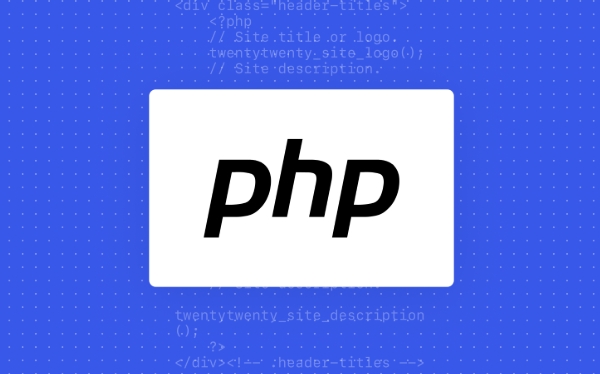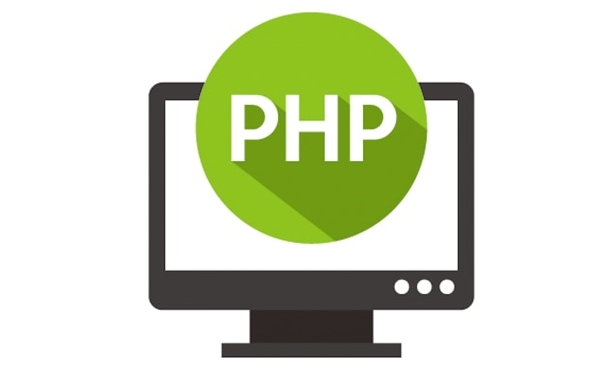 Backend Development
Backend Development
 PHP Tutorial
PHP Tutorial
 PHP development environment setup: multi-version PHP switching method
PHP development environment setup: multi-version PHP switching method
PHP development environment setup: multi-version PHP switching method
Jun 29, 2025 am 01:39 AMIn response to the problem of switching environments of multi-version PHP, the following three solutions are recommended: 1. Use PHPBrew for Linux/macOS, install the version through phpbrew install, switch the version by phpbrew use, and configure environment variables; 2. Windows uses XAMPP with multiple PHP directories to modify the PHPIniDir in httpd.conf to point to the corresponding version and adjust the system PATH; 3. Use Docker across platforms, specify different PHP images in docker-compose.yml to achieve environmental isolation. The above methods are applicable to different operating systems and usage scenarios, and are simple to operate and can effectively improve development efficiency.

When building a PHP development environment, you often need to switch between multiple PHP versions. For example, some old projects can only run on PHP 5.6, while new projects may use PHP 8.1. At this time, if you have to manually change the configuration or reinstall PHP every time, the efficiency will be too low. In fact, just a little setting can enable quick switching of multiple versions of PHP.

Using PHPBrew (for Linux/macOS)
PHPBrew is a PHP multi-version management tool designed specifically for Linux and macOS users, a bit like the nvm of Node.js. It allows you to install multiple PHP versions in one system and switch at any time.

- Installing PHPBrew is simple, you just need to download and configure environment variables through curl or wget.
- After installation, you can use
phpbrew installto install different versions of PHP, such asphpbrew install 7.4 default. - To switch versions, only one line of command is required:
phpbrew use 7.4orphpbrew use 8.1.
Note: PHP installed with PHPBrew will not be automatically added to the global PATH by default. You need to confirm whether the current shell has loaded the correct path. If you use Oh My Zsh or similar plugin, consider adding phpbrew init to your .zshrc or .bashrc file.
It is recommended to use XAMPP multi-PHP directory on Windows
Although there is no PHPBrew on Windows, you can use XAMPP and manual configuration to achieve multi-version switching.

XAMPP comes with a PHP directory, which we can replace with different versions of PHP decompression packages. The specific operations are as follows:
- Prepare multiple PHP versions (such as php-7.4, php-8.1) and can be downloaded from windows.php.net .
- Modify the
httpd.conffile of XAMPP, find thePHPIniDirline, and point to the PHP version directory you want to use. - If you are executing PHP scripts using the command line, you also need to modify the PATH in the system environment variables to point to the version of PHP you want to use.
The advantage of this method is that you don’t need to restart the service frequently, you just need to change the configuration and restart Apache to take effect. The disadvantage is that it is a bit troublesome to manually change the path every time, and it is suitable for users who do not pursue automation.
Quickly build an isolated environment with Docker (cross-platform)
If you have a certain understanding of container technology, Docker is a very convenient choice. It can create an independent operating environment for each project without interfering with each other.
For example, you can write different docker-compose.yml files for different projects and specify their respective PHP versions. When starting, run the corresponding service directly, and there is no need to change the PHP settings on the local machine.
# Example: PHP 7.4 service services:
app:
image: php:7.4-cli # Example: PHP 8.1 service services:
app:
image: php:8.1-cli In this way, if you run docker-compose run in different project directories, you can use the corresponding PHP version. This approach is particularly suitable for scenarios where team collaboration and deployment consistency requirements are high.
Basically these are the methods
The above methods have applicable scenarios: PHPBrew is recommended for Linux/macOS; Windows can use XAMPP with multiple PHP directories; if you want to be more flexible, Docker is a good choice. Each method has some small details to pay attention to, but it is not complicated. The key is to choose the right tool according to your own development habits.
The above is the detailed content of PHP development environment setup: multi-version PHP switching method. For more information, please follow other related articles on the PHP Chinese website!

Hot AI Tools

Undress AI Tool
Undress images for free

Undresser.AI Undress
AI-powered app for creating realistic nude photos

AI Clothes Remover
Online AI tool for removing clothes from photos.

Clothoff.io
AI clothes remover

Video Face Swap
Swap faces in any video effortlessly with our completely free AI face swap tool!

Hot Article

Hot Tools

Notepad++7.3.1
Easy-to-use and free code editor

SublimeText3 Chinese version
Chinese version, very easy to use

Zend Studio 13.0.1
Powerful PHP integrated development environment

Dreamweaver CS6
Visual web development tools

SublimeText3 Mac version
God-level code editing software (SublimeText3)
 PHP calls AI intelligent voice assistant PHP voice interaction system construction
Jul 25, 2025 pm 08:45 PM
PHP calls AI intelligent voice assistant PHP voice interaction system construction
Jul 25, 2025 pm 08:45 PM
User voice input is captured and sent to the PHP backend through the MediaRecorder API of the front-end JavaScript; 2. PHP saves the audio as a temporary file and calls STTAPI (such as Google or Baidu voice recognition) to convert it into text; 3. PHP sends the text to an AI service (such as OpenAIGPT) to obtain intelligent reply; 4. PHP then calls TTSAPI (such as Baidu or Google voice synthesis) to convert the reply to a voice file; 5. PHP streams the voice file back to the front-end to play, completing interaction. The entire process is dominated by PHP to ensure seamless connection between all links.
 How to use PHP to build social sharing functions PHP sharing interface integration practice
Jul 25, 2025 pm 08:51 PM
How to use PHP to build social sharing functions PHP sharing interface integration practice
Jul 25, 2025 pm 08:51 PM
The core method of building social sharing functions in PHP is to dynamically generate sharing links that meet the requirements of each platform. 1. First get the current page or specified URL and article information; 2. Use urlencode to encode the parameters; 3. Splice and generate sharing links according to the protocols of each platform; 4. Display links on the front end for users to click and share; 5. Dynamically generate OG tags on the page to optimize sharing content display; 6. Be sure to escape user input to prevent XSS attacks. This method does not require complex authentication, has low maintenance costs, and is suitable for most content sharing needs.
 How to use PHP combined with AI to achieve text error correction PHP syntax detection and optimization
Jul 25, 2025 pm 08:57 PM
How to use PHP combined with AI to achieve text error correction PHP syntax detection and optimization
Jul 25, 2025 pm 08:57 PM
To realize text error correction and syntax optimization with AI, you need to follow the following steps: 1. Select a suitable AI model or API, such as Baidu, Tencent API or open source NLP library; 2. Call the API through PHP's curl or Guzzle and process the return results; 3. Display error correction information in the application and allow users to choose whether to adopt it; 4. Use php-l and PHP_CodeSniffer for syntax detection and code optimization; 5. Continuously collect feedback and update the model or rules to improve the effect. When choosing AIAPI, focus on evaluating accuracy, response speed, price and support for PHP. Code optimization should follow PSR specifications, use cache reasonably, avoid circular queries, review code regularly, and use X
 PHP creates a blog comment system to monetize PHP comment review and anti-brush strategy
Jul 25, 2025 pm 08:27 PM
PHP creates a blog comment system to monetize PHP comment review and anti-brush strategy
Jul 25, 2025 pm 08:27 PM
1. Maximizing the commercial value of the comment system requires combining native advertising precise delivery, user paid value-added services (such as uploading pictures, top-up comments), influence incentive mechanism based on comment quality, and compliance anonymous data insight monetization; 2. The audit strategy should adopt a combination of pre-audit dynamic keyword filtering and user reporting mechanisms, supplemented by comment quality rating to achieve content hierarchical exposure; 3. Anti-brushing requires the construction of multi-layer defense: reCAPTCHAv3 sensorless verification, Honeypot honeypot field recognition robot, IP and timestamp frequency limit prevents watering, and content pattern recognition marks suspicious comments, and continuously iterate to deal with attacks.
 How to use PHP to combine AI to generate image. PHP automatically generates art works
Jul 25, 2025 pm 07:21 PM
How to use PHP to combine AI to generate image. PHP automatically generates art works
Jul 25, 2025 pm 07:21 PM
PHP does not directly perform AI image processing, but integrates through APIs, because it is good at web development rather than computing-intensive tasks. API integration can achieve professional division of labor, reduce costs, and improve efficiency; 2. Integrating key technologies include using Guzzle or cURL to send HTTP requests, JSON data encoding and decoding, API key security authentication, asynchronous queue processing time-consuming tasks, robust error handling and retry mechanism, image storage and display; 3. Common challenges include API cost out of control, uncontrollable generation results, poor user experience, security risks and difficult data management. The response strategies are setting user quotas and caches, providing propt guidance and multi-picture selection, asynchronous notifications and progress prompts, key environment variable storage and content audit, and cloud storage.
 PHP realizes commodity inventory management and monetization PHP inventory synchronization and alarm mechanism
Jul 25, 2025 pm 08:30 PM
PHP realizes commodity inventory management and monetization PHP inventory synchronization and alarm mechanism
Jul 25, 2025 pm 08:30 PM
PHP ensures inventory deduction atomicity through database transactions and FORUPDATE row locks to prevent high concurrent overselling; 2. Multi-platform inventory consistency depends on centralized management and event-driven synchronization, combining API/Webhook notifications and message queues to ensure reliable data transmission; 3. The alarm mechanism should set low inventory, zero/negative inventory, unsalable sales, replenishment cycles and abnormal fluctuations strategies in different scenarios, and select DingTalk, SMS or Email Responsible Persons according to the urgency, and the alarm information must be complete and clear to achieve business adaptation and rapid response.
 Beyond the LAMP Stack: PHP's Role in Modern Enterprise Architecture
Jul 27, 2025 am 04:31 AM
Beyond the LAMP Stack: PHP's Role in Modern Enterprise Architecture
Jul 27, 2025 am 04:31 AM
PHPisstillrelevantinmodernenterpriseenvironments.1.ModernPHP(7.xand8.x)offersperformancegains,stricttyping,JITcompilation,andmodernsyntax,makingitsuitableforlarge-scaleapplications.2.PHPintegrateseffectivelyinhybridarchitectures,servingasanAPIgateway
 PHP integrated AI speech recognition and translator PHP meeting record automatic generation solution
Jul 25, 2025 pm 07:06 PM
PHP integrated AI speech recognition and translator PHP meeting record automatic generation solution
Jul 25, 2025 pm 07:06 PM
Select the appropriate AI voice recognition service and integrate PHPSDK; 2. Use PHP to call ffmpeg to convert recordings into API-required formats (such as wav); 3. Upload files to cloud storage and call API asynchronous recognition; 4. Analyze JSON results and organize text using NLP technology; 5. Generate Word or Markdown documents to complete the automation of meeting records. The entire process needs to ensure data encryption, access control and compliance to ensure privacy and security.





